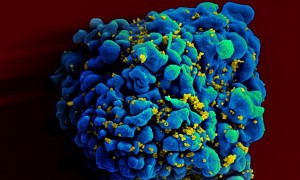
New HIV infections and deaths from Aids falling
A report by the United Nations Aids agency believe that the Aids epidemic can be under control by 2030, with both new HIV infections and Aids deaths both declining.
Despite this promising diagnosis, the paper also revealed that 35 million people globally were still living with HIV, with experts crying our for a more international effort as the “current pace cannot end the epidemic”. Charity Medecins Sans Frontieres also warned that those most in need of medication still had no access to them.
Aids related deaths have fallen by a fifth in the past three years, totalling 1.5 million a year, with numbers in both South Africa and Ethiopia drastically improving. There are also 38% less new cases of HIV, with 2.1 million cases recorded in 2013 compared to the 3.4 million in 2001. Increased access to drugs has allowed conditions to improve, as has the number of men opting for circumcision to reduce the risk of spreading or contracting HIV.
Not there yet
However the report emphasises that although the scene is looking up, things are far from finished yet, with fewer than four in 10 people with HIV receiving life saving antiretroviral therapy. For example, 80% of patients in Nigeria have no access at all to treatment. The report continued “There have been more achievements in the past five years than in the preceding 23 years. There is evidence about what works and where the obstacles remain, more than ever before, there is hope that ending Aids is possible. However, a business-as-usual approach or simply sustaining the Aids response at its current pace cannot end the epidemic.”
Michel Sidibe, the executive director of UNAids, told BBC News “If we accelerate all HIV scale-up by 2020, we will be on track to end the epidemic by 2030, if not, we risk significantly increasing the time it would take – adding a decade, if not more.”
Dr Jennifer Cohn, the medical director for Medecins Sans Frontieres’ access campaign, said “Providing life-saving HIV treatment to nearly 12 million people in the developing world is a significant achievement, but more than half of people in need still do not have access. We need to make sure no-one is left behind – and yet, in many of the countries where MSF works we’re seeing low rates of treatment coverage, especially in areas of low HIV prevalence and areas of conflict. In some countries, people are being started on treatment too late to save their lives, and pregnant women aren’t getting the early support they need.”


